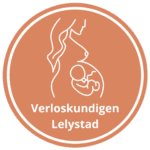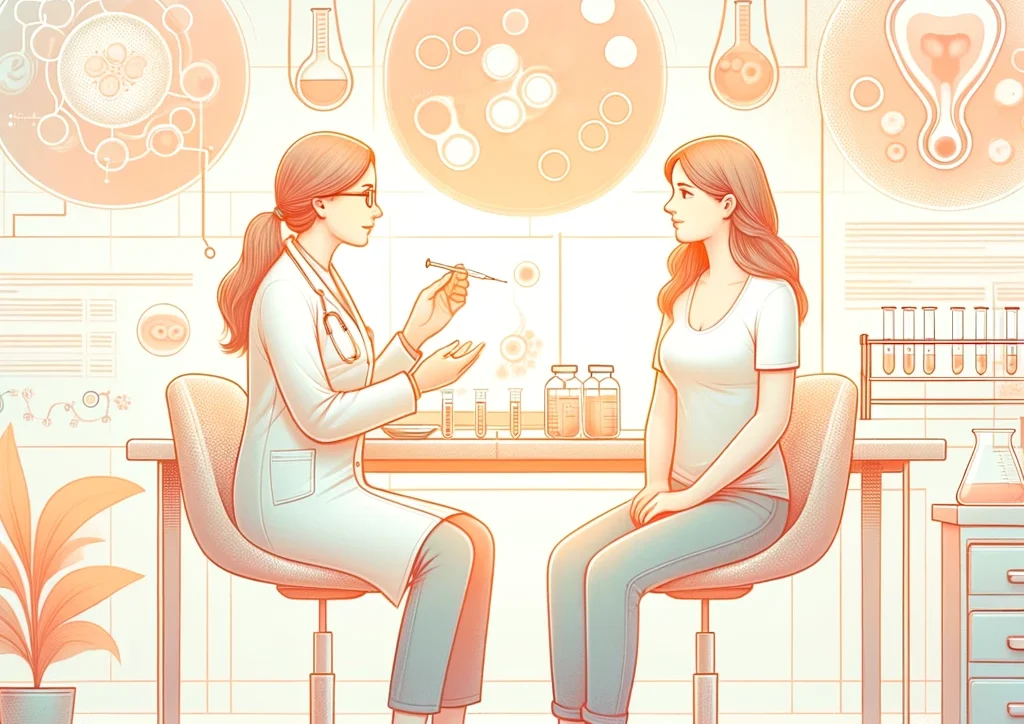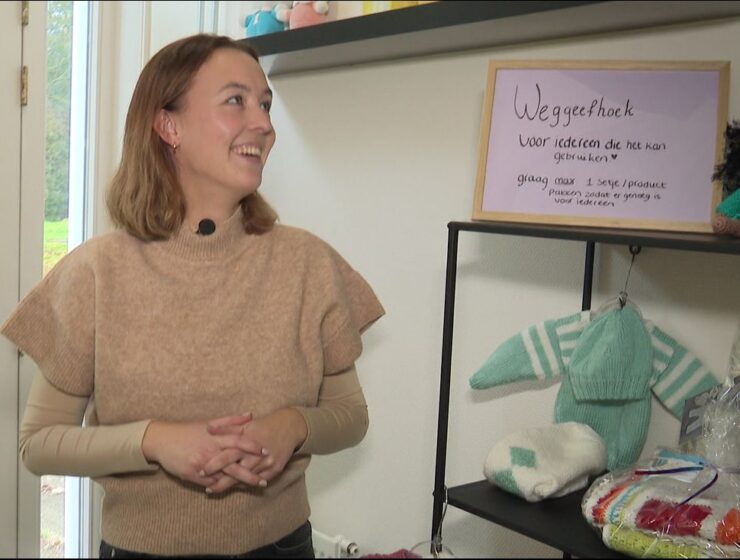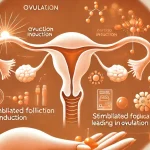Today we want to talk about a topic that concerns many couples: IVF, also known as in vitro fertilization. Maybe you've heard of it before, or maybe it's completely new to you. Either way, we're here to explain the basics to you. IVF can sometimes seem quite complicated and overwhelming, but don't worry — we will guide you through the entire process.
What is in vitro fertilization(IVF)?
In vitro fertilization, also called IVF is a commonly used medical procedure that helps many couples successfully conceive. This process involves several steps, all of which are closely monitored by a medical team. First, a woman will receive hormone injections to stimulate the development of multiple eggs in her ovaries. When these eggs are ripe, they are removed from the ovaries through a minor procedure. The eggs are then fertilized with sperm in a laboratory. This can be done via the conventional IVF method, in which sperm and egg are brought together in a dish, or via the Intracytoplasmic sperm injection (ICSI), where a single sperm cell is injected directly into the egg cell.
After fertilization, the resulting embryos are developed in a controlled environment for several days. When the embryos have reached the appropriate stage , chooses the embryologist the best embryo or embryos for transfer into the woman's uterus. If the embryo survives this stage, it can implant itself in the uterine wall and begin to grow, leading to a pregnancy. Despite the fact that IVF is an intensive process, it offers many couples a great opportunity to have a family. At Midwives Lelystad we are always ready to guide you during every part of this special journey.
Where can you do IVF?
For in-vitro fertilization (IVF) you can go to the Isala hospital in Zwolle. Isala Fertility Center is the largest non-academic fertility center in the Netherlands, where you can undergo almost all fertility examinations and treatments. Quality comes first. The team is small, accessible and involved in your situation.
The process starts with an extensive intake interview, in which your medical history and any previous treatments are discussed. This is followed by a series of tests to determine the most appropriate treatment method. After the preparations, including hormone stimulation and monitoring, the egg puncture takes place. This is an outpatient procedure in which the mature eggs are collected. These eggs are then fertilized with sperm cells in the laboratory. The fertilized eggs, or embryos, are placed back in the uterus a few days later.
A team of experienced gynecologists, fertility doctors and nurses are available to assist you throughout the entire process. They provide guidance and support, not only medically but also emotionally. This maximizes the chance of a successful pregnancy, with attention to both your physical and mental health.
Isala is fully committed to your maximum chance of pregnancy and continuously maintains the quality of care through various projects. This ensures that you can count on the latest techniques and personal care in a safe and reliable environment.
Two forms of IVF
Both techniques have their own advantages and disadvantages. Conventional IVF is usually recommended when there are no problems with the sperm cells, as it has a more natural selection mechanism. ICSI is often a solution for men with low sperm quality. However, the choice of the most suitable method depends on various factors such as the medical background of both partners and previous attempts. Below you will find a brief overview of the differences:
| Feature | Conventional IVF | ICSI |
|---|---|---|
| Fertilization method | Self-sperm cells fertilize egg cell | Individual sperm cell injection |
| Sperm quality | Medium to high | Bearing required |
| Cost | Usually lower | Higher |
When to undergo IVF treatment
IVF treatment can be considered when becoming pregnant naturally is not possible. This can have various causes, such as decreased semen quality endometriosis, or damaged or blocked fallopian tubes. If you have tried to get pregnant several times without success, IVF may be a suitable option. Together with our specialists at Midwives Lelystad Your personal situation is taken into account to determine the best treatment option.
In addition, there is often the consideration of when exactly to start IVF treatment. Here are several factors that play a role:
-
- Age: The chance of success is usually higher if the woman is younger.
-
- Health: General health and lifestyle can influence your chances of success.
-
- Medical history: Previous pregnancies and treatments play a role in the planning.
-
- Mental condition: The process is emotionally intensive, so it is important to be prepared for this.
| Factor | Influence |
|---|---|
| Age | Opportunities decrease as age increases. |
| Health | Body weight and lifestyle are crucial. |
| Medical history | Previous treatments may have an effect. |
| Mental condition | Stress and emotional preparation count. |
Preparing for hormone treatment
-
- Consultations and planning: Your initial meetings with our specialists will help you create a personalized treatment plan. This takes into account your medical history, current health status and specific wishes.
-
- Medication: During hormone treatment you will have to take various medications. It is important to use these according to the schedule established by your doctor.
| Step | Duration | Comments |
|---|---|---|
| Basic consultation | 1 hour | Draw up a personalized plan |
| Start medication | 2 weeks | Follow daily |
Moreover, it is mental preparation just as important. In addition to the physical aspects, it is good to take emotional fluctuations and possible stress into account. We encourage you to talk to your partner, friends or a counselor for additional support during this journey. This preparation ensures that your hormonal treatment runs as smoothly as possible.
How does in vitro fertilization (procedure) work?
The in vitro fertilization (IVF) procedure begins by stimulating the ovaries to produce multiple eggs. This is done with the help of hormonal medications that are administered daily via injections. During this phase we will monitor you regularly with ultrasound scans and blood tests to ensure that the follicles are developing properly. After about ten days, when the eggs are ripe, the puncture takes place under light anesthesia. Our expert doctors carefully extract the eggs from the ovaries, which usually takes no longer than 30 minutes.
The collected eggs are then combined in our laboratory with the sperm from your partner or from a donor. Within a few days we can see which embryo(s) have developed. These are checked for quality and one or two embryos are then placed back into the uterus, a process known as embryo transfer. Many people experience this as an exciting moment. The other embryo(s) can possibly be frozen for future attempts. Nine to twelve days later, the exciting pregnancy test takes place to see whether the treatment has been successful.
| Phase | Description |
|---|---|
| 1. Ovarian stimulation | Daily hormone injections to produce multiple eggs |
| 2. Puncture | Collection of mature eggs under light anesthesia |
| 3. Fertilization | Eggs and sperm are brought together in the lab |
| 4. Embryo transfer | The transfer of one or two embryos into the uterus |
| 5. Pregnancy test | Check whether the treatment is successful after 9-12 days |
Phase 1: stimulation of the ovaries
During the first phase of IVF we ensure that your ovaries produce more than the usual one egg per month. We do this with the help of hormone injections that you use every day for two weeks. These medications stimulate your ovaries so that they develop multiple eggs. This can sound overwhelming, especially in the beginning, but our team at Midwives Lelystad is always ready to guide and reassure you.
During this period you will regularly come to our clinic for ultrasounds and blood tests. We carefully monitor how your ovaries respond to the stimulation. Here are some common tests and observations:
-
- Ultrasound examination: To monitor the growth of the egg sacs.
-
- Blood tests: For measuring your hormone levels.
-
- Evaluation of symptoms: Such as bloating or mild discomfort.
The data we collect helps us determine the precise moment when your eggs are ready for the next step. Below is an overview of the common hormone medications used:
| Medicine | Function |
|---|---|
| Gonadotrophins | Stimulates the development of multiple eggs |
| GnRH agonists | Prevents premature ovulation |
| GnRH antagonists | Controls the release of LH |
Hopefully this gives a clearer idea of what to expect. Are the uncertainties increasing? We're packed with information and always ready to answer all your questions!
Phase 2: egg cell pick-up (egg aspiration) and sperm sample production
On the day of egg collection, we take the patient to the operating room, where our expert gynecologists will harvest the eggs. This process is done under light sedation or general anesthesia for comfort and is usually painless. The eggs are sucked up through the vaginal wall with a thin needle and taken to the laboratory for further processing. Although you may experience some discomfort after the procedure, our team will ensure that you feel good again quickly.
- Sedation or anesthesia: For comfortable experience.
- Time: The procedure usually takes less than 30 minutes.
- Recovery: Usually within a few hours.
In parallel, we must obtain a fresh semen sample from the male partner. This process requires the sperm donor to produce a sample in a confined space, which is then taken directly to the laboratory. If there are problems obtaining sperm on the day itself, we can also use a frozen sample that has been collected previously. The freshness and quality of the sperm are crucial for the success of fertilization in the lab.
| Step | Details |
|---|---|
| Collect | Producing sperm sample in confined space. |
| Processing | Direct transfer to laboratory. |
| Alternative | Use frozen steel if necessary. |
Phase 3: in vitro fertilization
| Step | Description |
|---|---|
| Stimulation | Use of hormones to mature multiple eggs |
| Pickup | Collect mature oocytes under light sedation |
| Fertilization | Bringing eggs and sperm cells together in the lab |
| Embryo transfer | Transferring the embryos into the uterus |
Phase 4: embryo transfer (embryo transfer)
In this crucial phase, the selected embryos are placed in the uterus. This often happens five days after egg puncture, when the embryos have reached the blastocyst stage. During the embryo transfer you lie on a comfortable treatment table, comparable to a regular gynecological check-up. The embryos are gently inserted using a thin catheter. This procedure is usually painless and completed within a few minutes.
-
- Comfortable and fast: the process often only takes 5 to 10 minutes.
-
- Minimally invasive: no anesthesia required.
-
- Ultrasound guidance: to ensure accurate placement.
After the embryo transfer, you will receive explicit instructions to plan your rest time. Mitsy Midwives advises you not to lift too heavy and avoid strenuous activities during the first 48 hours. Although it may be tempting, it is important to stay calm and avoid stress. In addition to rest, a healthy lifestyle is crucial; eat balanced meals, hydrate well and avoid harmful substances such as nicotine or alcohol.
| Action | Recommendation |
|---|---|
| Peace | Plan for at least 8 hours of sleep daily |
| Power supply | Healthy and varied diet rich in vitamins |
| Stress management | Yoga, meditation or quiet walks |
Phase 5: freezing of remaining embryos (cryopreservation)
During the fifth phase of the IVF process we arrive at the freezing leftover embryos. This method, also known as cryopreservation, allows you to save excess embryos for a later attempt. This can be a great safety net in case the first attempt is not successful. Moreover, it helps you avoid unnecessary physical and emotional strain. As you avoid the stress of a new hormone treatment on your next attempt, your chances of a successful outcome remain high.
The procedure is quite simple and is carried out by our specialists in the clinic. First of all, the embryos are carefully checked and selected. They then go through a process where they are slowly cooled and finally... frozen at a temperature of -196 degrees Celsius in liquid nitrogen. This process ensures that the cells in the embryonic structure are not damaged. Here are a few benefits of cryopreservation:
-
- Cost efficient: Fewer treatments make it financially attractive.
-
- Time saving: You don't have to go through the full IVF process again.
-
- Flexibility: You can choose the right moment for a new implantation.
We would also like to share how cryopreservation can be applied in different situations:
| Situation | Description |
|---|---|
| Unsuccessful first IVF attempt | Save time and costs by using already frozen embryos. |
| Family expansion | Use remaining embryos for future pregnancy(s). |
| Medical reasons | Genetic testing can be performed first. |
Phase 6: Pregnancy test
| hCG level | Possible Result |
|---|---|
| <5 mIU/ml | Not pregnant |
| 5-25 mIU/ml | Doubtful, repeat test |
| >25 mIU/ml | Pregnant |
Remember that whatever the outcome, every journey is different and you can always find support from our team at Midwives Lelystad. We are ready to help and guide you every step of the way.
IVF side effects and risks
can really surprise some people. It's important to stay realistic and understand what to expect. Side effects can range from mild to moderate, but are often manageable. Common side effects include:
-
- Bloated feeling
-
- Stomach ache
-
- Mood swings
-
- Headache
-
- Nausea
Although these symptoms are annoying, they usually disappear over time. Of course, always consult your doctor if you have any concerns.
In addition to side effects, there are also some risks associated with IVF treatments. Although rare, the following complications can occur:
| Risk | Description |
|---|---|
| Ovarian hyperstimulation syndrome (OHSS) | Can lead to painful swelling of the ovaries |
| Multiple pregnancy | Greater chance of twins, triplets or more |
These risks weigh heavily, but the chance is usually small. It is always important to be well informed and to discuss what the best approach is for you. We at Midwives Lelystad guide you through this process with care and expertise.
What are the chances of pregnancy?
After IVF treatment, you naturally want to know what the chances are that you will become pregnant. This depends on several factors, such as the age of the woman and the quality of the embryos. In general, women under 35 have a higher success rate, usually between 40% and 50% per cycle. For women between 35 and 40 years this is around 30% to 40%. For women over 40, the risk further decreases to approximately 10% to 15% per cycle. However, these percentages may vary depending on personal circumstances and clinical practices.
-
- Age of the woman
-
- Quality of the embryos
-
- Medicalhistory
-
- Lifestyle and health
Below is an overview of the success rates per age group:
| Age group | Success rate per cycle |
|---|---|
| Under 35 years | 40%-50% |
| 35-40 years | 30%-40% |
| 40+ years | 10%-15% |
In addition, it is important to understand that IVF sometimes requires several attempts before a successful pregnancy occurs. At Midwives Lelystad we guide you throughout this entire process and offer you the necessary support and advice.
Conclusion
And that's it, everything you need to know about IVF! We hope that with this article we have been able to give you a good idea of what is involved in IVF and how the process works. It can be an emotional and exciting time, but remember that there is always help and support. At Midwives Lelystad we are ready to guide you and answer all your questions. Whether you are at the beginning of your IVF journey or already in the middle of treatment, you are not alone.








